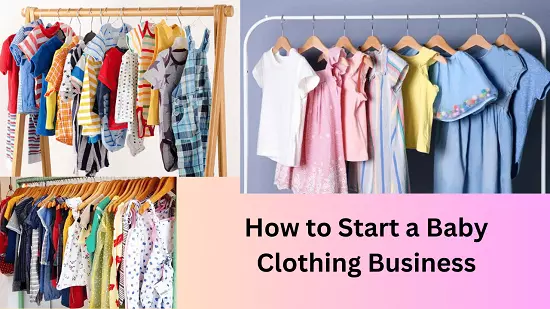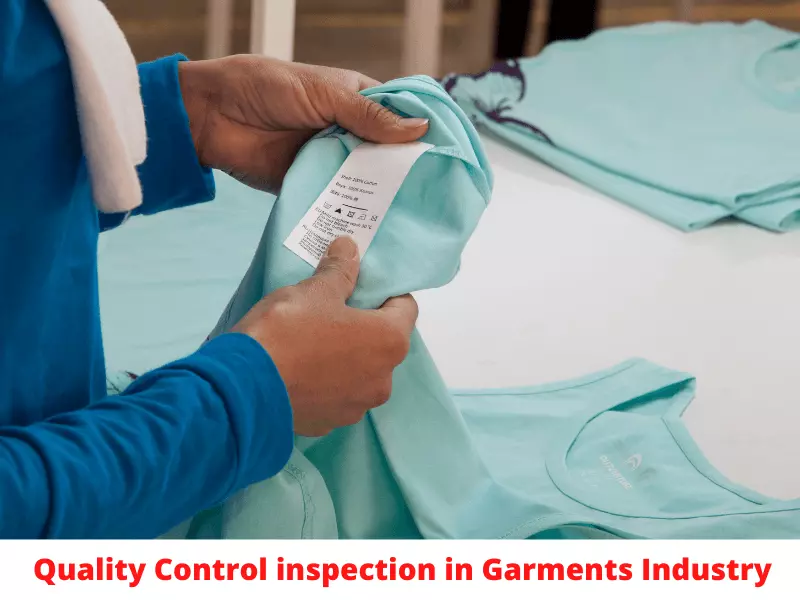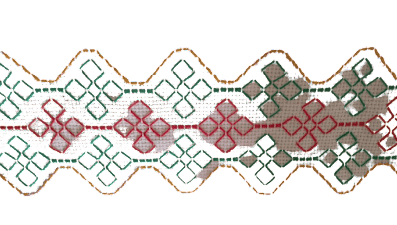The world of baby clothing is as vibrant and dynamic as the little ones who wear these adorable outfits. Characterized by an ever-evolving landscape of styles, patterns, and materials, the baby clothing market has solidified its presence as a significant niche within the larger apparel industry. Parents and family members are always on the lookout for the perfect outfit for their little ones, making baby clothing a product that is consistently in demand. In this article, we present step-by-step guidelines on How to Start a Baby/Children’s Clothing Business
The appeal of baby clothes goes beyond their miniature size and cute designs; they are essential items that parents need to purchase repeatedly as babies grow at an astonishing rate, especially in their first year of life. This constant need for new clothes results in a steady market for businesses operating in this space, providing entrepreneurs with a lucrative opportunity.
Embarking on a journey to establish a baby clothing business is not just about tapping into a profitable market; it’s about bringing joy and comfort to families. Baby clothes are more than just garments; they are a part of the cherished moments and milestones in a child’s early life. From the first outfit a newborn wears to come home from the hospital, to the dress or suit worn on their first birthday, these clothes hold sentimental value and create lasting memories.
Understanding the importance of quality, comfort, and style is crucial in this business. Parents are increasingly becoming conscious of the materials used in baby clothes, opting for organic and hypoallergenic fabrics to protect their baby’s sensitive skin. Additionally, the trend towards sustainable and ethically produced clothing is on the rise, as consumers are willing to invest in products that align with their values.

Step by Step Guideline on How to Start a Baby/ Children Clothing Business
Section 1: Research and Market Analysis
Understanding Your Audience
In the realm of the baby clothing business, comprehending your target audience is the compass that guides your every move. To begin, it’s essential to pinpoint the specific demographics that your baby clothing line aims to serve. Age group is a fundamental factor to consider. Are you designing for newborns, infants, toddlers, or a combination of these age groups? Each of these segments has unique clothing needs and preferences.
Style preferences should also be on your radar. Do parents in your target market lean towards traditional, trendy, eco-friendly, or something else entirely? Understanding these style preferences is pivotal in curating a collection that resonates with your customers.
Price range is yet another aspect to delve into. Parents’ budgets vary widely, and it’s crucial to ascertain where your products fit on the pricing spectrum. Are you positioning your brand as a budget-friendly option, a premium choice, or somewhere in between? Knowing your price point helps you align your offerings with your target audience’s financial expectations.
Perhaps equally important, if not more so, is delving into the psyche of parents and their buying habits. Parenthood brings about a series of lifestyle changes, including shopping preferences. Understanding the factors that influence parents’ purchasing decisions can be a game-changer. Are they looking for durability, convenience, safety, or all of the above? Conducting surveys, reading parenting blogs, and engaging with potential customers can provide invaluable insights into these aspects.
For instance, safety is a paramount concern for parents when it comes to baby clothing. Labels, fasteners, and materials must be safe for a baby’s delicate skin and free from potential hazards. Eco-conscious parents might be particularly interested in organic and sustainable materials. Armed with these insights, you can tailor your product offerings to cater to specific needs and preferences, setting your business apart in a crowded market.
Analyzing Competitors
In the bustling world of baby clothing, understanding your competitors is akin to navigating through uncharted waters with a well-constructed map. To establish a successful baby clothing business, you must conduct a thorough analysis of the existing brands in the market.
Begin by scouring the internet and visiting local baby stores to identify the prominent players in the baby clothing industry. Take note of their product offerings, pricing strategies, and unique selling propositions (USPs). Explore the digital landscape. Most baby clothing brands maintain an online presence through websites and social media platforms. Pay close attention to their website design, user experience, and the range of products they showcase. Social media profiles can offer insights into their engagement with customers, allowing you to gauge their popularity and reputation.
Dive into customer reviews and testimonials. These are treasure troves of information about what customers appreciate and what they find lacking in existing baby clothing brands. Pay attention to recurring praises and criticisms. Industry-specific trade shows and expos can provide a firsthand look at the latest trends and innovations in baby clothing. They also offer opportunities to network with other businesses and discover emerging brands that may not have a strong online presence yet.
Once you’ve gathered data on your competitors, it’s time to identify gaps in the market. These gaps represent opportunities for your business to fill unmet needs or offer something unique. Look for areas where competitors may be overlooking specific age groups, styles, or materials. Conduct a SWOT analysis (Strengths, Weaknesses, Opportunities, and Threats) for each key competitor. This helps you pinpoint their vulnerabilities and areas where your baby clothing business can excel.
Engage with potential customers to gather their insights. You can create surveys or simply engage in conversations on social media to understand their pain points and unfulfilled desires when it comes to baby clothing. Purchase and inspect products from your competitors to assess their quality, materials, and workmanship. This firsthand experience can help you identify areas where you can excel and outperform the competition.
Analyze the pricing strategies of your competitors. Are they positioning themselves as affordable, luxury, or somewhere in between? Understanding their pricing can help you make informed decisions about your own pricing structure. Finally, use the information you’ve gathered to craft a clear differentiation strategy. Highlight what sets your baby clothing business apart from the competition, whether it’s superior quality, unique designs, or exceptional customer service.
Section 2: Business Planning: To Start a Baby/ Children Clothing Business
Creating a Business Plan
Embarking on the journey of launching a baby clothing business requires more than just a passion for adorable onesies and tiny socks. It necessitates a well-thought-out roadmap known as a business plan. In this section, we explore the importance of a solid business plan and the key components it should encompass.
A business plan serves as the cornerstone of your entrepreneurial venture, offering a structured framework for success. A business plan compels you to articulate your vision clearly. It forces you to define your business goals, objectives, and strategies, ensuring you remain focused and on track. It outlines the steps you need to take to achieve your business goals. This strategic direction is invaluable, especially when making critical decisions or navigating unexpected challenges. If you seek external funding, a well-crafted business plan can be the difference between securing investment and getting turned down. It demonstrates your commitment and seriousness to potential investors. A business plan helps you understand the day-to-day operations, from sourcing materials to marketing strategies. It’s your operational handbook.
Key Components of a Business Plan
A comprehensive business plan comprises several key components:
Executive Summary is your business in a nutshell. It provides a brief overview of your baby clothing business, including its mission, vision, and primary objectives. It’s often the first section potential investors and partners will read, so it should be compelling and concise. Business Description is where you delve into the specifics of your business. Explain the nature of your baby clothing venture, its history (if applicable), and its legal structure (e.g., sole proprietorship, LLC). Discuss your unique selling proposition (USP) and what sets your brand apart.
Organize your research on the baby clothing market, including the size, trends, and demographics. Identify your target audience and competition, showcasing your understanding of the competitive landscape. Using that, outline the structure of your business. Who are the key team members, and what are their roles? If it’s a solo venture, provide an overview of your qualifications and experience.
Provide comprehensive information about your baby clothing products. What styles and materials will you offer? Include details on your designs, sourcing of materials, and any unique features that make your products stand out.
Section 3: Sourcing and Manufacturing
In the realm of baby clothing, the quality of materials and the reliability of manufacturers are the cornerstones upon which your business stands. Here, we explore how to source quality materials and provide tips for finding trustworthy manufacturers to ensure that your baby clothing business thrives.
Begin by identifying the specific materials you require for your baby clothing line. Common materials for baby clothes include cotton, organic cotton, bamboo, and blends. Consider factors such as softness, breathability, and hypoallergenic properties when making your choices. Start your search for material suppliers by exploring both local and global options. Attend trade shows and connect with textile industry professionals to discover reputable suppliers. Additionally, consider online directories and platforms specialized in textile sourcing.
Always prioritize quality when choosing materials. Request samples from potential suppliers to assess the feel, durability, and safety of the fabrics. Look for certifications such as OEKO-TEX Standard 100, which ensures textiles are free from harmful substances.
Tips for Finding Reliable Manufacturers
Conduct thorough due diligence on potential manufacturers. Investigate their track record, including client reviews and references. Ensure they have experience in producing baby clothing and have the capacity to meet your production needs. Insist on stringent quality control measures. Discuss quality assurance protocols with manufacturers to ensure they align with your standards. Regular inspections and testing during production are essential to maintain consistent quality.
Effective communication with manufacturers is key to a successful partnership. Clearly articulate your expectations, specifications, and timelines. Establish a feedback loop to address any issues promptly. Verify that your chosen manufacturers adhere to ethical labor practices. Ensure that workers are treated fairly, paid appropriately, and provided with safe working conditions. Ethical manufacturing is not only morally sound but also essential for your brand’s reputation.
Before committing to large-scale production, request a sample run to evaluate the manufacturer’s capabilities and the quality of the final product. Make any necessary adjustments based on the sample. Consider working with multiple manufacturers to mitigate risks associated with potential production delays or quality issues. Diversifying your manufacturing sources can provide stability in the long run.
When signing a contract, clearly outline terms, pricing, payment schedules, and expectations in written contracts with your manufacturers. Legal agreements protect both parties and provide a framework for dispute resolution.
Quality Control
The well-being of babies and toddlers is paramount. Ensuring the safety of your products is not just a moral responsibility but also a legal one. Baby clothing must meet stringent safety standards to prevent accidents or harm to infants. Quality and safety go hand in hand with building trust among parents and caregivers. When customers know they can rely on your brand for safe and well-made baby clothing, they are more likely to become loyal, repeat customers.
Regulatory agencies have established safety standards for baby products, including clothing. Non-compliance can result in legal consequences, including recalls and fines. A single incident involving unsafe or poor-quality baby clothing can tarnish your brand’s reputation irreparably. On the flip side, a reputation for safe and high-quality products can be a powerful marketing tool.
Standards and Certifications for Baby Clothing
1. OEKO-TEX Standard 100: This international certification ensures that textiles used in clothing are free from harmful substances. It guarantees that your baby clothing items are safe for your young customers. Many parents actively look for products with this certification.
2. GOTS Certification: If you’re offering organic baby clothing, the Global Organic Textile Standard (GOTS) certification is essential. GOTS ensures that your organic textiles meet both environmental and social criteria throughout the entire production process.
3. ISO 9001 Certification: This international standard focuses on quality management systems. Manufacturers with ISO 9001 certification are committed to maintaining consistent quality in their products. Partnering with ISO 9001-certified manufacturers can enhance your product quality.
Section 4: Branding and Marketing: To Start a Baby Clothing Business
Developing a Brand Identity
In the bustling world of baby clothing, crafting a strong brand identity is the key to standing out amidst the sea of adorable onesies and tiny shoes. First, you need a logo. Your logo is the visual face of your brand, and it should leave a lasting impression. Consider design elements that resonate with the themes of infancy and comfort. Soft colors, playful fonts, and adorable illustrations often work well in baby clothing logos. Think about iconic baby motifs like pacifiers, teddy bears, or storks, but add your unique twist to make it memorable. Keep your logo simple and versatile. It should be easily recognizable whether it’s on a clothing tag, website, or social media profile. A cluttered or overly intricate logo may not translate well across all mediums.
Selecting the right brand name is equally important. It should be easy to spell, pronounce, and remember. Consider names that evoke warmth, comfort, and trust. Remember to check for trademark availability to avoid legal issues down the road. Once you have your logo and brand name, use them consistently across all touchpoints—your website, social media profiles, product packaging, and marketing materials. Consistency reinforces your brand identity in the minds of your audience.
Next, identify your USP. Your Unique Selling Proposition (USP) sets you apart from competitors. It’s what makes your baby clothing brand unique and compelling. To identify your USP, consider what differentiates your products from others in the market. In the baby clothing industry, emphasizing quality and safety can be a powerful USP. Communicate how your products meet or exceed safety standards and are made with the utmost care and attention to detail. Highlighting your use of eco-friendly and hypoallergenic materials can also be a compelling selling point.
Share your brand’s story and values. Parents appreciate transparency and a personal connection with the brands they choose for their children. Whether it’s your journey as a parent, your commitment to sustainability, or your dedication to quality craftsmanship, weaving your story into your brand narrative can resonate with customers. Another effective USP is a customer-centric approach. Offer exceptional customer service, easy returns, and a hassle-free shopping experience. Demonstrating that you genuinely care about your customers and their babies can set you apart.
If you have unique designs, innovative features, or technology incorporated into your kid’s clothing, make sure to highlight these aspects. Parents are often drawn to products that offer something fresh and different.
Setting Up an Online Store
Starting an online baby clothes business is an exciting venture. One of the key steps in establishing your presence in the market is setting up an efficient, user-friendly, and visually appealing online store. Below is a guide on how to do just that, as well as some platform recommendations to get you started.
Your domain name is your online identity. Choose a name that is short, easy to remember, and relevant to baby clothing. Make sure it’s unique and not already in use. A hosting provider will store your website data and make it accessible on the internet. Some popular options include Bluehost, SiteGround, and HostGator. Look for providers offering excellent customer support, high uptime rates, and scalable plans. Choose a platform that suits your technical skills and business needs. Some platforms are more user-friendly, while others offer more customization options. Popular choices include Shopify, WooCommerce (for WordPress users), Magento, and BigCommerce.
Create a clean, attractive design that highlights your products. Ensure your website is easy to navigate, with clear categories and filters. Pay attention to the product pages, providing high-quality images and detailed product descriptions. Offer multiple payment options to cater to different customers. Integrate secure and reliable payment gateways like PayPal, Stripe, or Square.
Ensure your website is secure to protect both your business and your customers. Install an SSL certificate and regularly update your software and plugins. Before going live, test your website’s functionality, load time, and mobile responsiveness. Ensure all links are working, and the checkout process is smooth. Once everything is set up and tested, launch your online store. Promote it through various channels like social media, email marketing, and SEO to attract customers.
Conclusion
Starting a business can be challenging, but it is also incredibly rewarding. With dedication, hard work, and the right tools, you can create a successful online baby clothes business. Remember, every big achievement begins with the decision to try. So, take the first step today, and start building your dream business. The world of baby fashion is waiting for you, and with the right approach, you can make a significant mark in it. Embrace the journey, stay committed, and watch as your business flourishes. We put our best here to mention all How to Start a Baby/Children’s Clothing Business by step-by-step guidelines.
- You may love to read: How to Find Manufacturers for Athletic Clothing: 10 Ways


